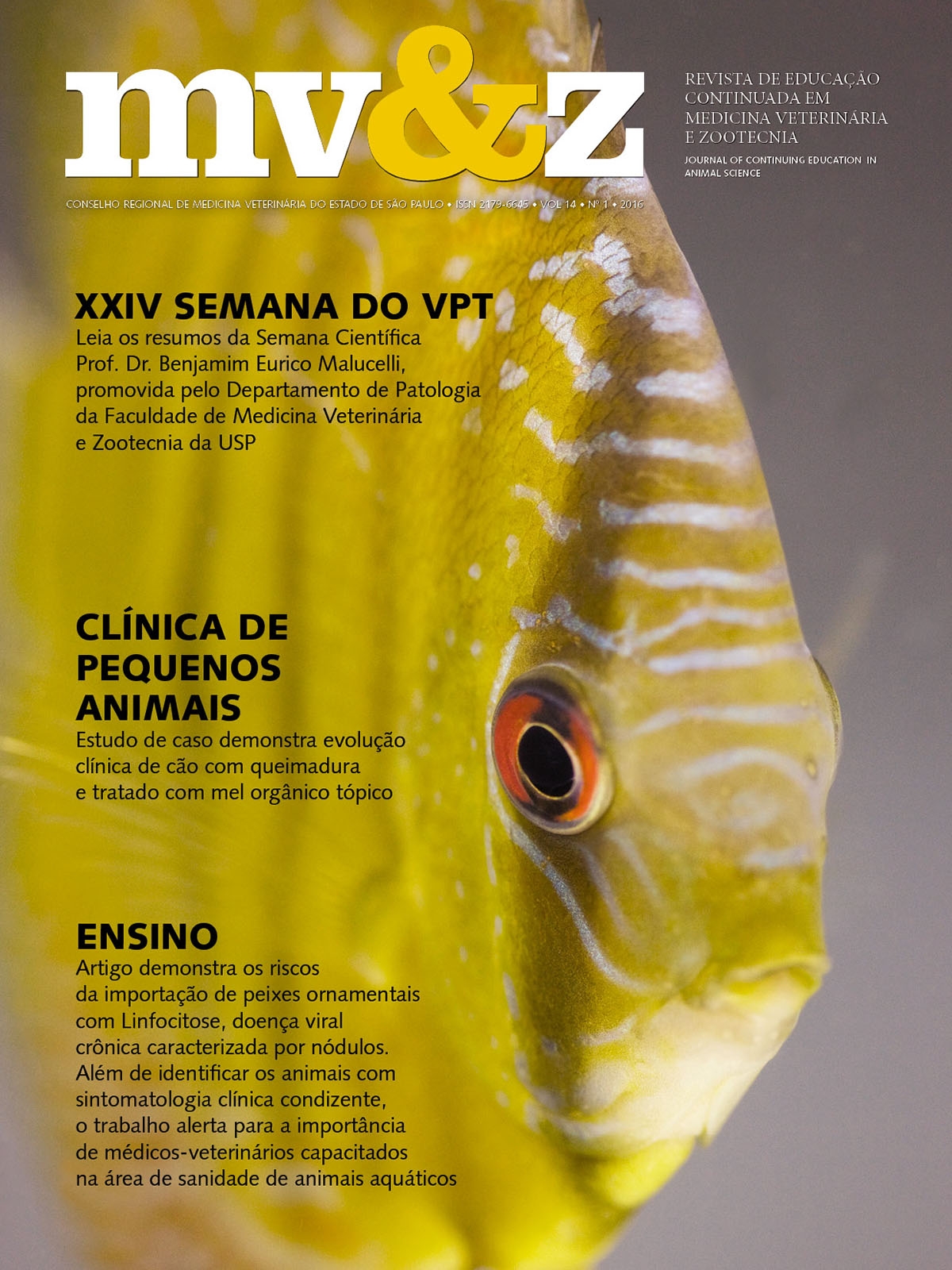Abstract
The captivity maintenance of snakes is a challenge for the breeders, especially in diseases control. The most common diseases in serpentarium and private collections are the parasites, gastrointestinal problems and respiratory viruses. The biggest concern is the ophidian paramyxovirosis caused by ophidian paramyxovirus (OPMV), which primarily affects the respiratory system and may also involve the nervous system. Often fatal, it was described in Colubridae, Elapidae, Viperidae, Boidae and Pitonidae. This virus is transmitted by aerosols, respiratory secretions, contaminated utensils, ectoparasites such as ticks and digestive excreta. There is no specific treatment or vaccine available. The diagnostic methods are: virus isolation in cell culture; electron microscopy; immunohistochemical; polymerase chain reaction (PCR); hemagglutination-inhibition (HI) and liquid-phase blocking ELISA (Enzyme Linked Immuno Sorbent Assay). This study aimed to make a serological survey, by liquid-phase blocking ELISA, searching to the presence of the anti-OPMV antibodies in 42 snakes (36 poisonous and six, not poisonous) maintained in the Center for the Study of Venoms and Venomous Animals (CEVAP) - UNESP. The serum was collected from caudal ventral vein and sent to the Virology Laboratory of the Biosciences Institute of Botucatu - UNESP for evaluation of antibodies titers. The prevalence of seropositives was 9.5% (four animals), all of them Crotalus durissus terrificus. Three of these had the highest antibody titers (strong positive) and were maintained in semi-extensive captivity and one with the lowest title (weak positive) was in intensive captive. It is known that in semi-extensive captivity, where the animals are in direct contact with the same source of water, there is higher possibility of infection. The result of the strongly positive animals suggests the possibility of recent virus, but not necessarily expressing signs of illness. The weak positive, kept in intensive captivity, was a survivor of an outbreak 12 years ago in CEVAP, which shows that reptiles remained producing antibodies for years. It is not yet clear if these antibodies are protective or just flags of contagion or if these animals are reservoirs of the disease. The ophidian paramyxovirosis is a silent disease, highly contagious and with many cases of sudden death. Finally, case-control studies should be conducted for the elucidation if these antibodies indicate viral resistance or reservoir conditions In the last case, the isolation of seropositive animals will be imperative for adequate prophylaxis of the disease.
